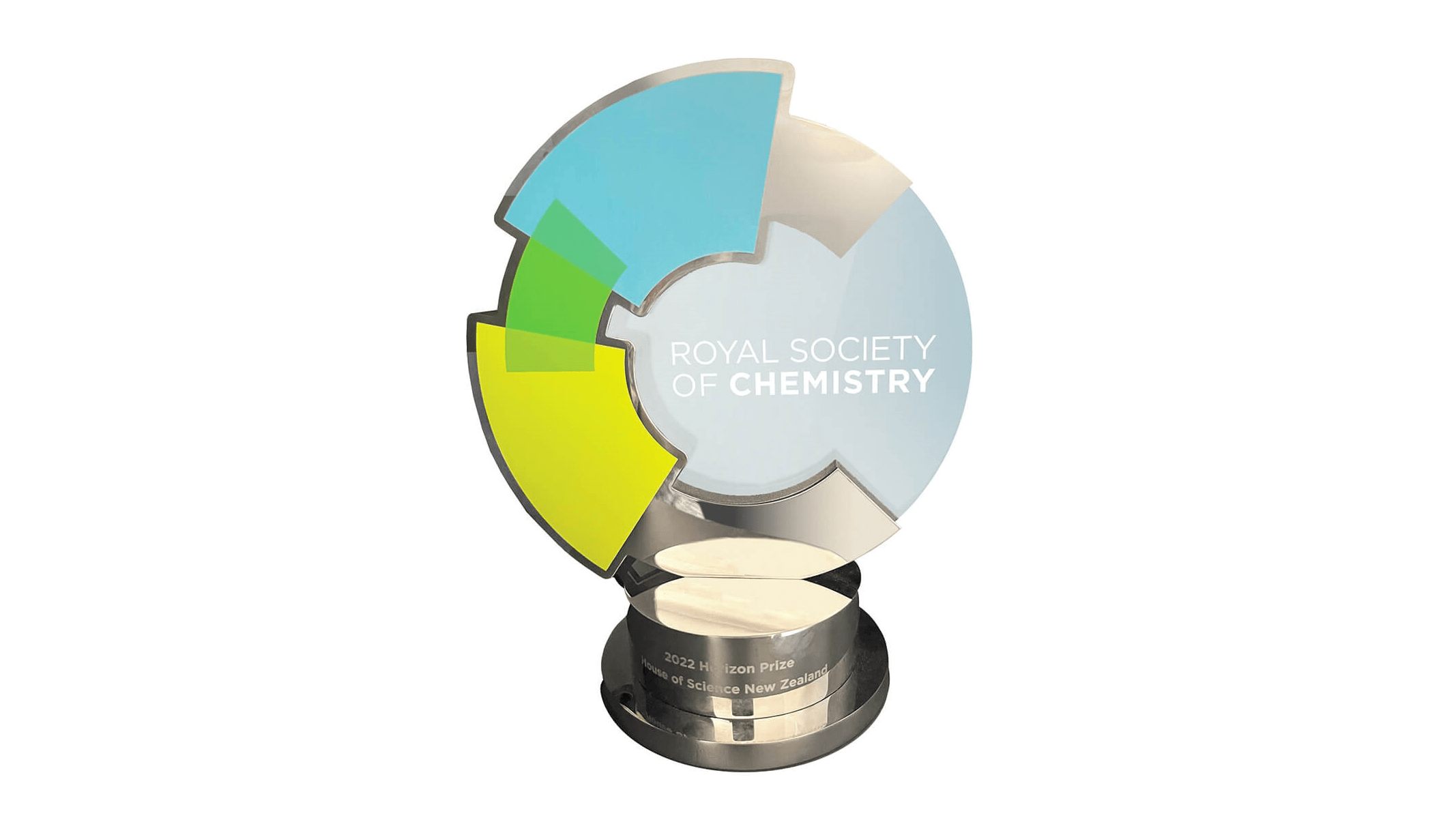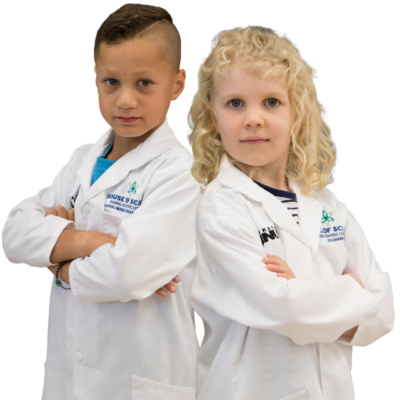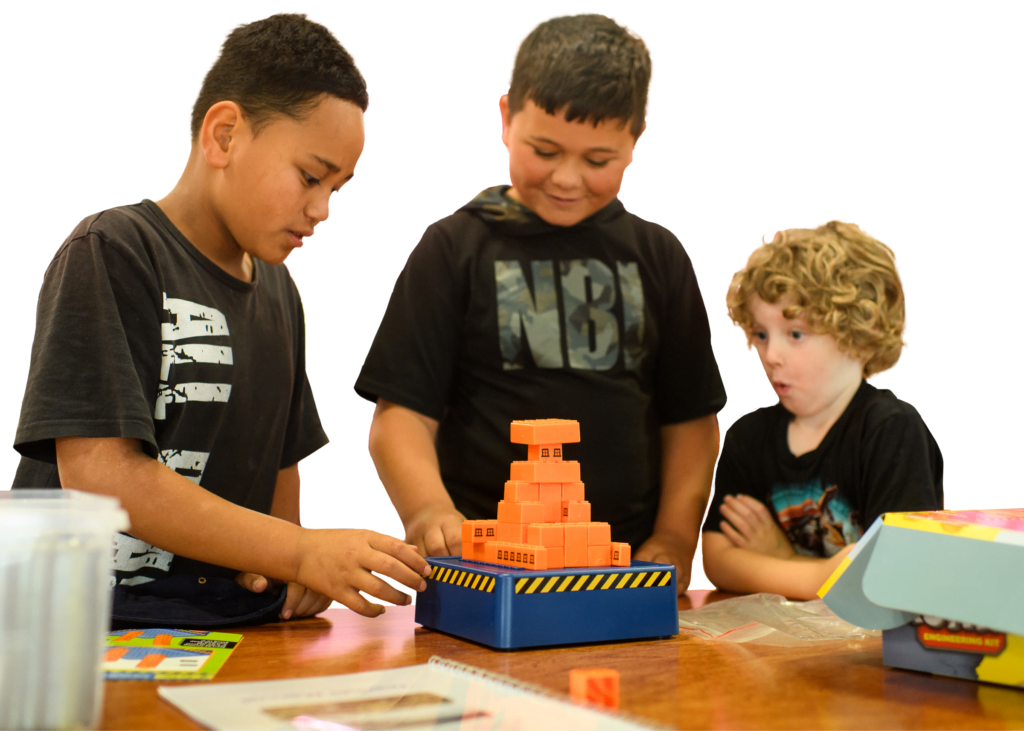Science Kits
A comprehensive library of bi-lingual resources that empower teachers to deliver great science lessons

OUR SCIENCE RESOURCE KITS
Our award winning science kits include at least 5 hands-on experiments, they cater for Year 0-8 students, are easy to use – everything a teacher needs is in the kit, they include all consumables, bi-lingual student instructions and teacher manual, and are fully aligned to the NZ curriculum.

The tamariki loved this Science kit, they were able to look at some of the food in a different way, the experiments were awesome. Nga mihi nui ki a koe, koutou ko nga tangata I awhina ki te whakahaere tenei mahi Putaiao.
Food for Thought
Robyn Davey
Tamarongo School

We equip thousands of teachers across Aotearoa to deliver engaging hands-on science lessons every week. Our kits cover the whole primary science curriculum and are a huge hit with students and teachers.
HOW IS IT FUNDED?
Our kits are developed with the help of subject matter experts in organisations such as Pūtahi Manawa, Powerco and the Marine Stewardship Council.
National kit sponsors provide a copy of a particular kit for each branch - such as Genesis School-gen (‘Hot Stuff’), Fonterra (‘Moo to You’) and NZAGRC (‘Climate Change’).
Local kit sponsorship pays for the purchase, maintenance, delivery and upkeep of each kit.

OUR SCIENCE RESOURCE KITS
Our bi-lingual science resource kits cover a vast range of relevant topics and include at least five hands-on experiments that cater for children in years 0-8. Everything a teacher needs, including consumables, are included in the kits.
3, 2, 1…Lift Off!
Rocket science, anyone? Students explore the forces behind rocket flight – lift, thrust, weight, and drag – by testing a variety of rockets. With a strong inquiry focus, each activity introduces key concepts, sparking curiosity and deeper exploration, inspiring young scientists to question, experiment, and discover the science of rocket flight.
A Load of Rubbish
Earth’s resources are finite, yet we’re using them faster than ever. Are we generating too much waste? Are we managing it sustainably or harming our environment? This kit explores the 6 ‘R’s’ of resource management – rethink, refuse, reduce, reuse, recycle, and repair – encouraging students to design out waste and find sustainable solutions by looking for inspiration from the natural world.
Antarctica
The highest, windiest, driest, coldest place on Earth is also one of the most fascinating. How do its unique plants and animals survive? Why is it crucial to our climate? Students investigate Antarctic ecosystems, create ice and frost, explore marine food chains, and discover the impact of unsustainable fishing practices. There is also a focus on the Southern Ocean, its ecosystems and their role in climate regulation.
Big Blue Future
Bring the ocean into your classroom with fascinating sea monkeys, food chains, and sea turtles. Why do fish vary in shape and size? What is sustainable fishing? What is the difference between bycatch and target species? How does ocean waste impact marine life? This resource introduces students to the importance of our oceans and why protecting them is vital for our planet’s future.
Clear the Air
Clean air is vital for our health – so how can we monitor and improve it? This resource lets students explore the respiratory system, test their lung capacity (lots of huffing and puffing!), and use monitors to demonstrate how the quality of the air we breathe, both inside and outside the classroom, can be monitored, measured and modified.
Climate Change
From Earth’s system ‘Jenga’ to climate resilience, this resource provides a comprehensive introduction to an important topic. Students investigate how Earth’s systems connect, simulate the greenhouse effect, and explore the importance of plants and water on our planet. By examining their carbon footprint, they discover how their choices impact the planet. This resource informs and empowers students to act for a sustainable future.
Dem Bones
10 small skeletons, a ½ size human skeleton, images of ‘see-through Zac’ and a set of X-rays allow students to discover and explore all the bones in their bodies and understand their form and function. Animal skeletons in resin and sets of image cards give the opportunity to compare the human skeleton with other animal species.
Earthquakes
What causes the Earth’s crust to fracture and break, releasing waves of energy? Students explore the composition of the Earth, model moving tectonic plates and are introduced to the different types of energy waves caused by earthquakes and their movement and destructive capacity. A dynamic resource that helps students understand the ever-changing Earth beneath our feet.
Electric Future
Spark students’ curiosity with playdough circuits and LED bulbs, saltwater batteries and building torches. Renewable energy alternatives for electricity generation are explored using solar cars (sun) and a homemade anemometer (wind). The activities are sequential and build knowledge of currents, circuits, resistance, and insulation.
Fireworks
This resource provides many opportunities to predict, observe and explain natural phenomena using the context of fire. Students observe ‘fireworks’ in a test tube, explore candle flame zones and are introduced to the fire triangle. The creation of colourful candle flames leads to discussion and wonderings about how fireworks are created.
Flexi-Physics
Bounce, flex, spring – what is elastic potential energy? This resource breaks down a tricky concept using everyday items like rubber bands, slingshots, catapults, and different balls. It also introduces gravitational and chemical potential energy. With an inquiry focus, students explore, discuss, and extend their learning.
Float my Boat
Will it float or sink? What is “flinking”? What is a hydrometer? Students explore buoyancy, density, and displacement by testing objects, recording observations, and making predictions. They can also calculate the density of solids, compare the densities of liquids and investigate the relationship between volume, mass, and density.
Food for Thought
Ingredients change a recipe’s texture, colour, and taste. Why do jellies wobble? How does heat make popcorn pop? What is gluten? Why does milk curdle? What is the difference between baking soda and baking powder? Students find the answers to these and many other questions by exploring the chemistry of food. Future sustainable food options are also covered.
Forest Health
Explore New Zealand’s native forests. Students discover unique plant and animal life, study a tree’s ecosystem, and listen to the soundscape of a healthy forest. They visualise, in the classroom, giant kauri and pōhutukawa, examine tree rings, and learn about kauri dieback and myrtle rust. Seeds and their role in conservation and forest restoration are highlighted.
Fossil Fuels
Examination of a selection of fossil fuel samples as well as some hands-on chemistry and the creation of a model to visualise fossil fuel formation gives students insight into what fossil fuels are and where the energy stored in them comes from. There is also an opportunity to investigate the impact of oil spills on the environment and test different materials and methods for containment and cleanup.
Hot Stuff
Energy is in everything, making things move and change and heat energy is the focus of this resource. Students observe the temperature change of a variety of objects and surfaces, explore conductivity and are introduced to the concept of insulation. They will discover where heat energy comes from and how we detect it.
How We See the World
It’s all about light! Light bouncing off surfaces and objects around us allows us to see. Through a series of activities using mirrors, lasers, torches, prisms, and coloured filters, students explore where light comes from, how it travels, and how we see colour. The characteristics of colour are also discussed while having some messy fun mixing paints.
Invasion Busters
This resource introduces key biosecurity concepts that allow scientists to prepare for, manage and minimise the risk invasive species pose to New Zealand’s unique plants and animals. Students sort and identify seeds, study stink bugs, build insect traps, and model insect population growth. The learning culminates in engaging board and card games where students work together to defend New Zealand’s borders from invading pests.
Magnetic Madness
Do opposites attract? Students explore magnetism using magnets, paperclips, and iron filings. They investigate magnetic fields, poles, and how magnetism can be used to move metal items. Building on this, students discover how compasses work, make their own compass, and learn about the Earth’s magnetic pull.
May the Force be With You
This kit explores force, friction, mass, and weight. Everyday forces are investigated through pulling, balancing, and friction challenges. Students experiment with friction, mass, gravity, and weight by sending a toy car down a ramp. There are lots of links to numeracy including measuring force, time, and distance.
Measurement Matters
Measurement is everywhere, shaping our daily lives in unexpected ways. It provides a standard for everyday things and processes. Students are introduced to standard vs non-standard units, accuracy vs precision, calibration of measuring devices and the importance of accurate measurement.
Micro-Exploration
The 10 digital microscopes supplied in this resource allow for exploration of the world at 50 or 200 times magnification. Connecting the microscopes to laptops or desktop computers via Google Docs, allows a whole class to view the enhanced detail of the captured magnified images. Safe to use outdoors too.
Mighty Microbes
Microbes are tiny living things that inhabit the world with us. But why can’t we see them? Are they helpful or harmful? Could we live without them? This resource gives students insight into the diverse group of life forms that we unknowingly share our bodies with and encounter every day of our lives in lots of unexpected ways.
Moo to You
What is a mammal? How do cows turn grass into milk? Is all milk the same? This resource explores animal classification, digestion, and nutrition. Students grow pasture, make silage, compare human and cow digestion in a fun, messy way and discover the variety of milk products available for sale in our supermarkets. Cows are cooler than you think!
Nano-Chem
‘Nano’ means really, really small. Nano chemists are scientists who use atoms (the tiniest building blocks of everything) to create new materials with special, useful properties. This resource, developed with New Zealand’s top scientists from the MacDiarmid Institute, allows students to explore hydrophobic surfaces and the unexpected properties of materials produced from polymerisation and crystallisation reactions.
Plants, Pests & Produce
This resource explores the science that supports New Zealand’s primary sector producers. Students identify and discuss the difference between pests and beneficial insects and their impacts on crops. A lot of fun can be had with ‘squirt science’ where droplet size and spray coverage are experimented with and the links between insect communication and pheromone traps are explored.
Plants, Petals & Pollination
This kit is packed with resources to help students explore plant structure up close. A digital microscope allows students to see parts of the plants that are very small, but crucial to its survival. Bean seeds are germinated, a matching activity links plants to food and the ‘pollination game’ emphasises the vital role that pollinators play in the reproduction of flowering plants.
Simple Machines
Imagine a world without wheels, ramps, screws, stairs, nails, knives or pulleys! These are all examples of simple machines – tools that make work easier. Activities in this resource reveal how these tools that we see and use in everyday life function. The advantage of ‘fluid power’ is also covered with the introduction of pneumatic and hydraulics.
Soil Secrets
The mountains, valleys, and plains that shape our landscapes are formed by natural processes such as erosion, weather, earthquakes, and volcanoes. These same processes break down rocks into soil – the thin, but vital layer, on top of the Earth’s crust that we depend upon for survival. This kit allows for exploration of many different landforms, soil texture and structure, and the important relationship between soil and water.
Spaced Out
This kit explores our place in the solar system, the relationship between our star, the Sun, and Earth and explores the components and scale of our solar system. Students create craters in ‘moon sand’, investigate modern space technology, and discover how satellites impact daily life.
Super Sense
Sight, taste, smell, and touch are the senses explored in this resource. Jellybeans are taste-tested blindfolded, a variety of scents are sniffed, optical illusion cards designed to trick the mind are included and the distribution of touch receptors on the surface of the body are located and measured.
Sweet & Sour
Acid and base chemistry is introduced using foods that students are familiar with. Sherbert is made, and then eaten, so the fizzing chemical reaction can be experienced in the mouth. pH paper is provided to test various chemicals, and a pH indicator is made in-house from red cabbage. Neutralisation is explored using baking soda and vinegar.
The Heart
The heart is the hardest-working muscle in the human body, continually pumping blood throughout our lifetime. How does it work without tiring? How can we keep it healthy? Students explore heart structure, listen to their heartbeat, measure pulse and blood pressure, and see the heart in action with AR and 360° video. Imagine peering inside a blood vessel as red and white blood cells go whizzing by!
Up, Up & Away
Fly, float or fall? The definition of flight is explored as students discuss what makes objects fly, test paper planes, and experiment with wing shapes to create lift. Younger students focus on fair testing to determine the best paper plane, while older students tackle a technology challenge: Can they make their animal fly?
Volcanoes
What causes the Earth’s crust to fracture and break, releasing molten rock (lava) from its interior? Students learn about the composition of the Earth, model tectonic plate movement, identify volcanic rocks and create different types of volcanoes and volcanic eruptions. An excellent introduction to the powerful and spectacular forces that cause constant movement and change in the Earth’s landscape.
Water Analysis
How healthy is your stream? Many schools have a body of water nearby and this kit provides everything needed to test and monitor the quality of the water. Testing includes pH, turbidity, nitrate levels, and flow rate. There are guides for students to identify any invertebrates (insects) in the water as they can also be used as ecological indicators for determination of environmental health.
Weather Ready
What causes weather? It is the heating and the cooling of the surface of the Earth and its atmosphere by the Sun that causes our weather patterns. Students construct models to visualise cloud and rain formation, explore the movement of hot and cold air, create a tornado in a bottle and learn to interpret simple weather maps.
What do you think?
This kit helps students think like scientists. Science can often be magical and mysterious, and students will enjoy making observations and inferences to try to explain how a mystery tube or a ‘splink’ or a rattleback works. This resource also tackles environmental issues, prompting students to observe, ask questions, and think critically about human impact on the planet and its resources.
What’s the Buzz?
Bumblebees are one of the best pollinators and play a key role in producing much of the food we eat. This resource gives students the opportunity to learn about the many unique characteristics of bumblebees, compare bumblebees with honeybees and understand how flowers attract pollinators. Sound and vibration are also covered in the context of ‘buzz’ pollination as well as the differences in colour perception when comparing humans and insects.
Who-Diddit?
This resource expands on the ‘Who Dunnit?’ kit with exciting new activities. Students investigate trace evidence transfer, ‘blood’ splatter, and footprint casting. With a set of crime scene scenarios to solve, they will need to use their newly acquired sleuthing skills to uncover clues and identify the guilty suspect.
Who-Dunnit?
This is a popular resource that teaches four key forensic techniques: fingerprinting, handwriting analysis, fibre identification, and white powder tests. Once students master these skills, they solve a crime using suspects’ police information and evidence collected from the scene of one of four crimes.
Who’s been There?
Imagine collecting a sample from a stream and identifying all the living things that have passed through it. Students are introduced to the structure of DNA and the role of environmental DNA (eDNA) as a conservation tool for monitoring both past and present biodiversity. There’s also an opportunity to participate in a citizen science project focused on monitoring New Zealand’s waterways.
Wonderful Wai
Water, water everywhere! This resource offers an introduction to changing states of matter by exploring water as a solid, a liquid, and gas. Students make ice balls, investigate melting with heat, salt, and time, and explore water’s surface tension. They learn about evaporation, create a model water cycle, and discuss freshwater use and its impact on natural ecosystems.






